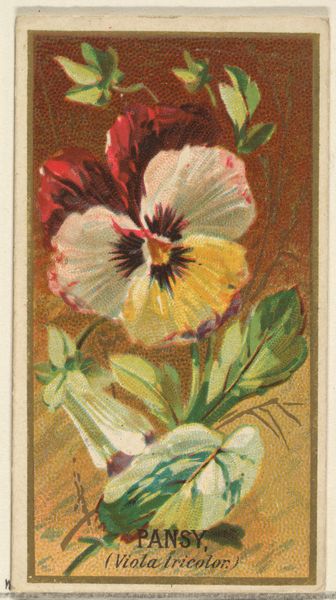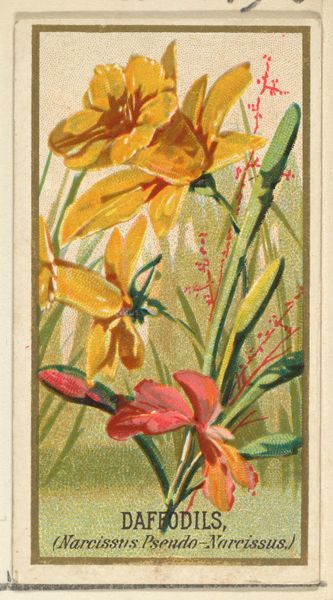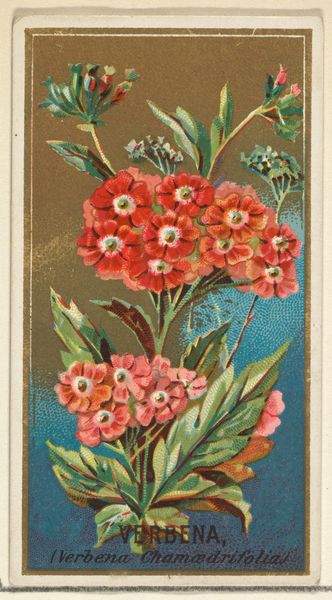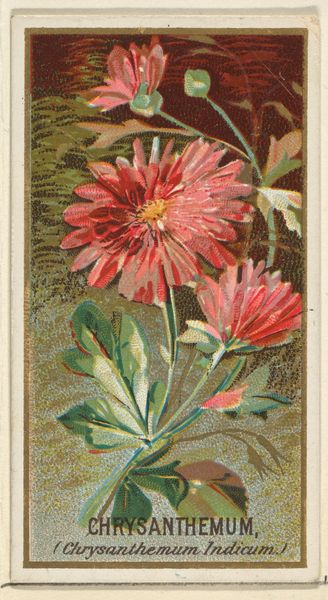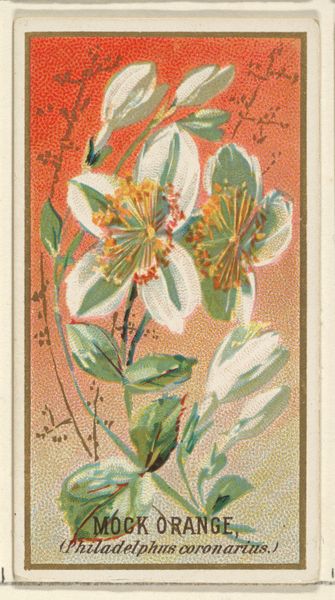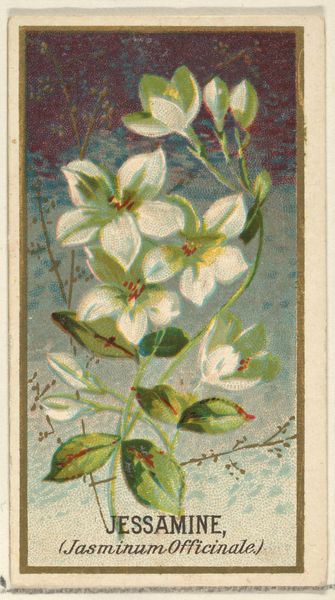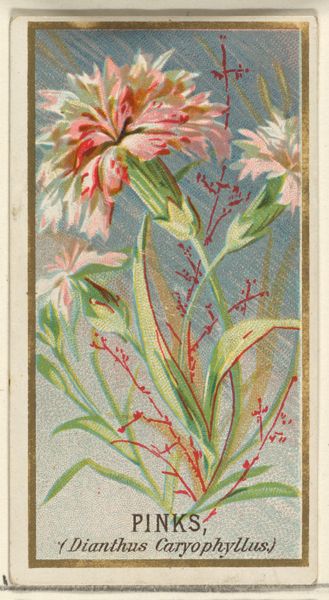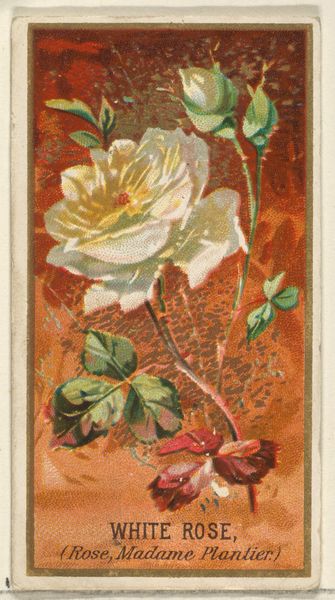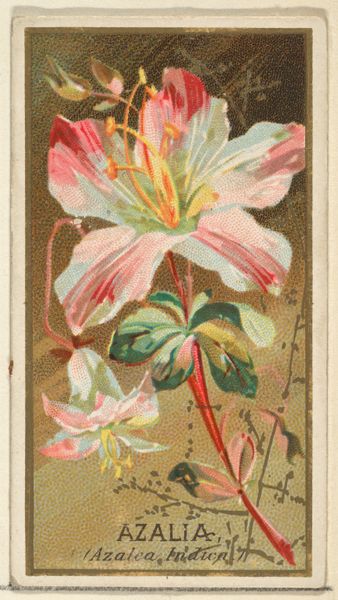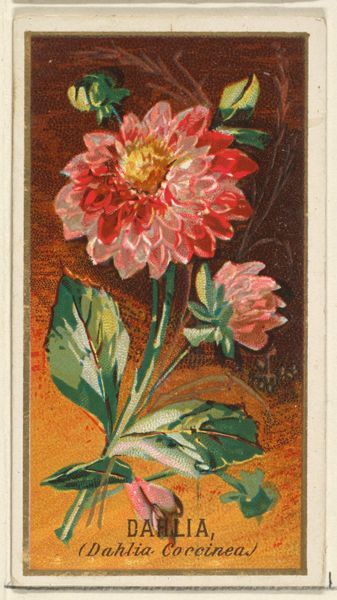
Primrose (Primula Vulgaris), from the Flowers series for Old Judge Cigarettes 1890
0:00
0:00
#
water colours
# print
Dimensions: sheet: 2 3/4 x 1 1/2 in. (7 x 3.8 cm)
Copyright: Public Domain
Curator: Here we have "Primrose (Primula Vulgaris)", from the Flowers series for Old Judge Cigarettes, created by Goodwin & Company around 1890. It’s currently held at the Metropolitan Museum of Art. Editor: My initial impression is one of simple charm. The yellow hues against that warm brown background really pop, creating a miniature world of natural beauty. It feels like a compressed, intimate study. Curator: Compressed is a good word. These were printed as trade cards, included in packs of cigarettes. Tobacco companies used them as a means of advertising, but also as collectible items. The small format directly relates to its purpose as a consumer object, cheaply and efficiently manufactured, designed to be widely circulated. Editor: Focusing on form, I'm drawn to the way the artist balances the composition. The clusters of primroses, the carefully arranged leaves, all create a sense of harmony. Note how the dots of watercolor making up the colors enhance the textures and volumes within a very limited depth of field. Curator: Yes, and the use of watercolor suggests an embrace of a certain…feminine sensibility, aligning the product, and by extension smoking, with notions of refinement suitable for a bourgeois public. This echoes broader trends where images of flowers often appeared in decorative contexts, but it's all carefully packaged and commodified. Editor: It's a delicate balance isn't it? Between representation and reality. The execution and composition feel so intentional, leading you to notice elements like the texture of the background and its slightly uneven coloration. Curator: That's intentional I think, mimicking the subtle irregularities found in nature. The reproductive methods of prints have implications; each element had to be individually stamped and cut from larger printed pages. This means this wasn't created with 'high art' as the aim. This was piecework, plain and simple, but a piece of an industrial output for sure. Editor: It seems clear that analyzing its form enhances its material and contextual meaning, as a symbol of manufactured nature. Curator: Indeed. Hopefully this helps underscore how unpacking its purpose, and not just appreciating its floral simplicity, deepens one's comprehension. Editor: I agree. Focusing on form is merely the starting point. These pieces benefit so greatly from contextualizing their industrial purposes!
Comments
No comments
Be the first to comment and join the conversation on the ultimate creative platform.

